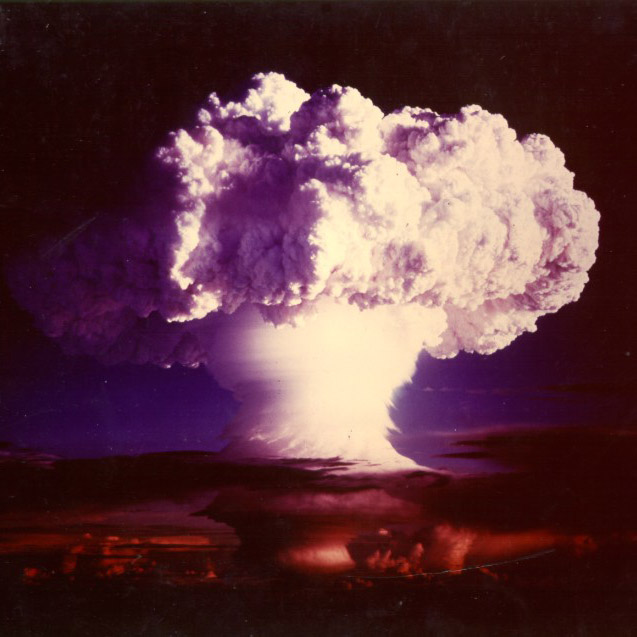Einsteinium
99
Es
Skupina
n/a
Perioda
7
Blok
f
Protony
Elektrony
Neutrony
99
99
153
Hlavní vlastnosti
Atomové číslo
99
Atomová hmotnost
[252]
Hmotnostní číslo
252
Kategorie
Aktinoidy
Barva
n/a
Radioaktivní
Ano
Pojmenován po Albertu Einsteinovi
Krystalografická soustava
n/a
Historie
Einsteinium was discovered as a component of the debris of the first hydrogen bomb explosion in 1952.
It was identified by Albert Ghiorso and co-workers at the University of California, Berkeley in collaboration with the Argonne and Los Alamos National Laboratories, in the fallout from the Ivy Mike nuclear test.
The new element was produced by the nuclear explosion in miniscule amounts by the addition of 15 neutrons to uranium-238.
It was identified by Albert Ghiorso and co-workers at the University of California, Berkeley in collaboration with the Argonne and Los Alamos National Laboratories, in the fallout from the Ivy Mike nuclear test.
The new element was produced by the nuclear explosion in miniscule amounts by the addition of 15 neutrons to uranium-238.
Elektronů v obalu
2, 8, 18, 32, 29, 8, 2
Elektronová konfigurace
[Rn] 5f11 7s2
Einsteinium is the first divalent metal in the actinide series
Fyzické vlastnosti
Skupenství
Pevná
Hustota
8,84 g/cm3
Teplota tání
1133,15 K | 860 °C | 1580 °F
Teplota varu
-
Skupenské teplo tání
n/a kJ/mol
Skupenské teplo varu
n/a kJ/mol
Měrná tepelná kapacita
- J/g·K
Hojnost v zemské kůře
n/a
Hojnost ve vesmíru
n/a

Autorská práva obrázku: Wikimedia Commons (National Nuclear Security Administration)
Einsteinium bylo poprvé pozorováno v spadu po jaderném testu Ivy Mike
Číslo CAS
7429-92-7
PubChem CID číslo
n/a
Atomové vlastnosti
Atomový poloměr
-
Kovalentní poloměr
-
Elektronegativita
1,3 (Paulingova stupnice)
Ionizační potenciál
6,42 eV
Molární objem
28,5 cm3/mol
Tepelná vodivost
0,1 W/cm·K
Oxidační čísla
2, 3
Aplikace
Einsteinium is mainly used for scientific research purposes.
The rare isotope einsteinium-254 is favored for production of ultraheavy elements.
Einsteinium-254 was used as the calibration marker in the chemical analysis spectrometer of the Surveyor 5 lunar probe.
The rare isotope einsteinium-254 is favored for production of ultraheavy elements.
Einsteinium-254 was used as the calibration marker in the chemical analysis spectrometer of the Surveyor 5 lunar probe.
Einsteinium je škodlivé díky své radioaktivitě
Izotopy
Stabilní izotopy
-Nestabilní izotopy
240Es, 241Es, 242Es, 243Es, 244Es, 245Es, 246Es, 247Es, 248Es, 249Es, 250Es, 251Es, 252Es, 253Es, 254Es, 255Es, 256Es, 257Es, 258Es